The Witching Hours
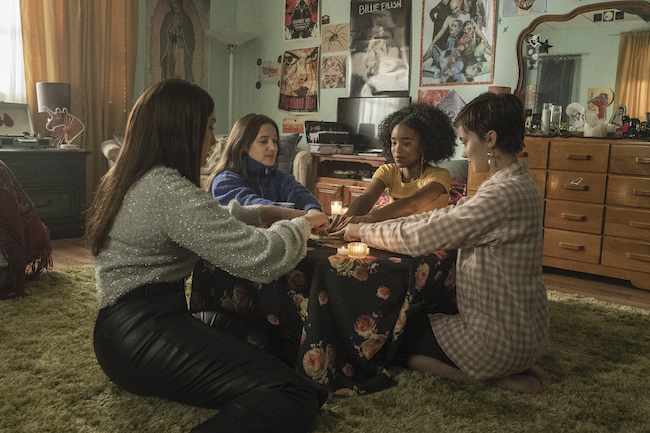
The recent features and bear a number of similarities. Chief among them: Both were shot by cinematographer Hillary Spera. Each story also exists in the realm of horror-thrillers, and each involves a mother-daughter relationship that turns out to be something other than what’s originally believed. “In both cases, I would say it’s a very strong bond between the mother and daughter,” Spera notes. “In both movies, they really love each other and are working to define their relationship.”
Directed by Aneesh Chaganty, Run focuses on Chloe (Kiera Allen), a bright, tenacious teenager, on the cusp of going to college, who for as long as she can remember has suffered from a number of serious ailments and has been paralyzed from the waist down. As she eagerly awaits a response to her college application, Chloe becomes increasingly convinced that her doting single mother, Diane (Sarah Paulson), is harboring a dark and terrible secret.
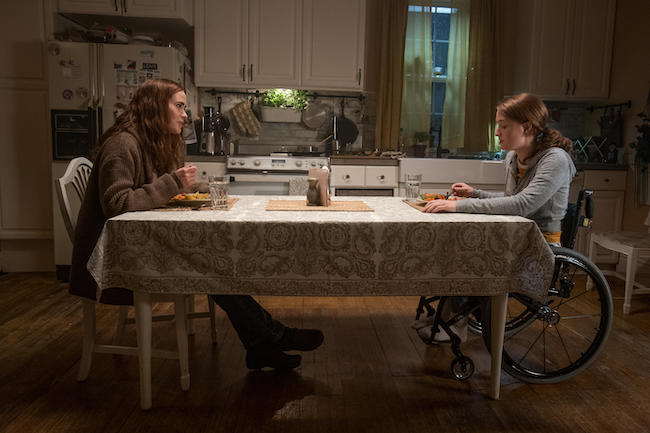
The Craft: Legacy, meanwhile, follows the spirit of Andrew Fleming’s 1996 feature The Craft, presenting a new generation of four young women bonding with one another as they develop their magical abilities. Written and directed by Zoe Lister-Jones, Legacy begins with Lily (Cailee Spaeny) and her mother, Helen (Michelle Monaghan), moving in with the latter’s boyfriend, Adam (David Duchovny), and his three sons. After befriending Lourdes (Zoey Luna), Frankie (Gideon Adlon) and Tabby (Lovie Simone) at her new school, Lily awakens to her powers and potential.
Of the two features, Run was shot first, during the fall of 2018 in Winnipeg, and The Craft: Legacy was shot the following year, in fall 2019, primarily in Toronto. For both projects, Spera turned to her longtime partners at Panavision. “They’re always my go-to,” she says. “I love that relationship of working with Panavision. One of the most important things for me is their support. It’s always a ‘yes’; they’re always gung-ho to help find solutions, and they’re always there to have my back. And their network is so vast. The fact that I could call [marketing executive] Rik DeLisle at Panavision Hollywood and he connected me with [rentals and services manager] Jerry Papernick at Panavision Toronto is really fantastic. It makes things so much easier and more streamlined as I work in so many different locations.”
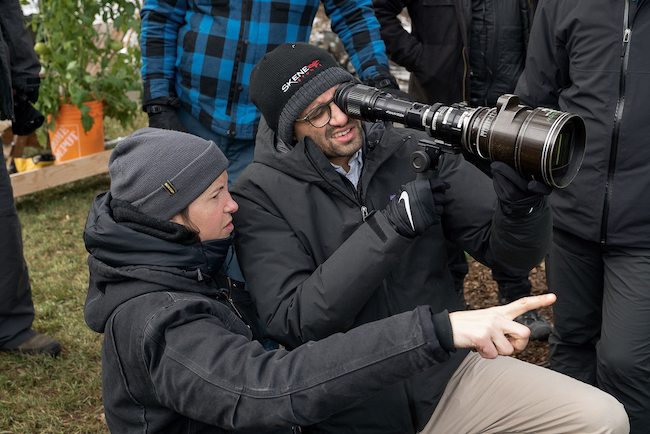
Hillary Spera and director Aneesh Chaganty.
Spera collaborated with Papernick for both Run and The Craft: Legacy. “And then,” she adds, “when we moved to L.A. at the end of Craft, Jerry and Rik shared information and worked together. I’m so grateful to both of them. They truly moved mountains for us to make it work.”
Spera’s path toward cinematography began with an interest in still photography, which she decided to pursue in college. There, her focus began to shift from stills to motion pictures. “I started shooting everything I could,” she reflects. “I moved to New York the minute I graduated, and I took every opportunity that came my way. I made a rule for myself that I was never going to say ‘no.’ I learned by being on set, making a lot of mistakes, and following a deep passion for visual storytelling.”
In the years since, she’s built a résumé that includes such feature credits as Black Rock, Submission, Dude, Alex Strangelove and Duck Butter, the latter of which partnered her for the first time with producer Natalie Qasabian. When Qasabian began working on Run, she reached out to Spera and introduced her to Chaganty, who had written the script with writer-producer Sev Ohanian. Spera recalls that when she met with Chaganty, “We hit it off right off the bat. We had a lot of shared references and were thinking about the movie in a similar way. He really impressed me with his preparedness and the way he was conceiving the movie, but also his openness to collaborate. Sev and Aneesh wrote the script with a lot of room to build visually, so I was excited about the potential of where it could go from a visual standpoint.”
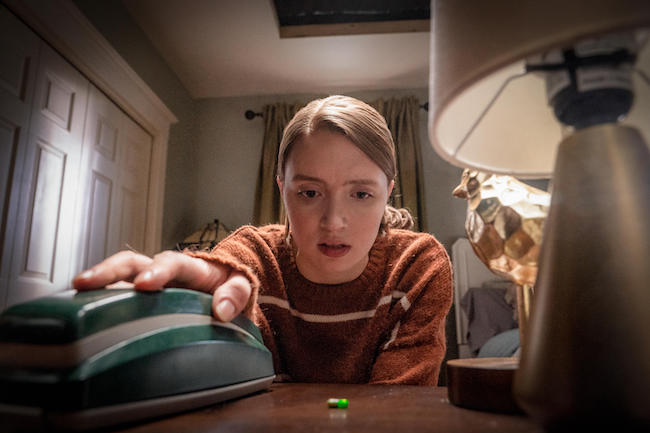
During preproduction, Qasabian, Chaganty and Spera formed a tight-knit group that came to their creative decisions together. “Everything was up for discussion,” the cinematographer recalls. “For example, I pitched the idea of shooting anamorphic, and we collectively discussed why I thought it would work. It was a fun exercise to make sure the group all believed in the decisions we were making. I think the film is stronger because of that trust and support.”
Regarding the choice of anamorphic, she explains, “The rooms in the house had frames within themselves that I thought anamorphic could complement, adding a more textured, almost 3D quality to some of the images. It was a good challenge, because we shot in such small spaces. I’m grateful to 1st AC Doug Lavender for being up for the challenge, even though we lived on diopters, often close to wide open. He mounted a retractable pointer onto the matte box for some of our macro close-ups where there was such a shallow depth of field, and he would use that to show Kiera how far she could lean in, so she would have a physical reference of what she could and couldn’t do. I thought that was brilliant.”
After testing a number of options, Spera opted for Panavision’s E Series anamorphic lenses, which she supplemented with a few wider-angle T Series focal lengths, including 35mm, to preserve the architectural lines inside the house. “I fell in love with the E Series right away because they’re older and have a beautiful vintage-glass quality,” she explains. “Aneesh and I talked about making the film feel a little timeless and not necessarily modern and sharp, and the Es have a softer quality that really helped to elevate the images and complement our style.”
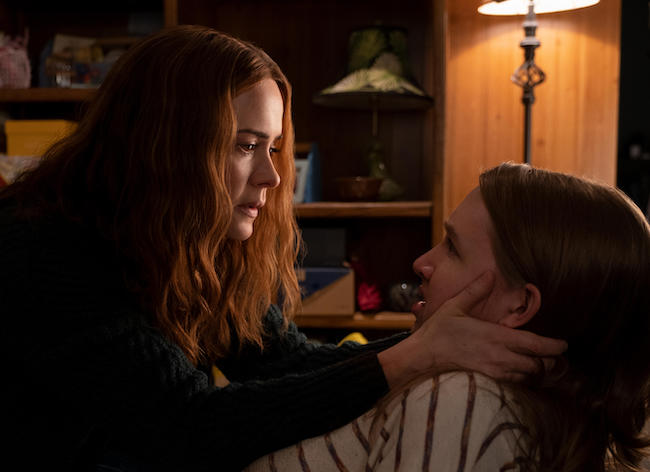
Spera and Chaganty storyboarded the entire movie during preproduction, and the cinematographer notes that the final shots matched the boards “almost exactly. Aneesh would draw them, and we’d discuss all of them together. It was a very intentional movie visually. There were a lot of repeated themes and images. Aneesh wanted to create a feeling of repetition and routine — and then, when the routine breaks, you feel it.
“Oftentimes the camera is an extension of Chloe’s world,” Spera continues. “Whether it’s a whip pan or a slow push-in, the camera is motivated by what she’s noticing. So much of the film is about revealing clues, seeing details and slowly putting together the pieces of the puzzle, and the camera helps the viewer do that. I’m never a fan of doing a camera move just for the sake of it. It has to have a purpose.”
Among the filmmakers’ visual references, Spera cites Rosemary’s Baby for its “frames within frames. It’s also a contained movie in the sense that it primarily takes place in one location, where the character is stuck. Another big one for me was The Tenant; it feels claustrophobic, but visually it doesn’t ever get tedious or boring or too constrained. Panic Room was another reference for the idea of taking place in one house. And Aneesh would say [writer-director M. Night] Shyamalan was a huge reference for him.”
In fact, Chaganty and Spera conceived an extended camera move — for a scene in which Chloe discovers a box that holds the key to her and Diane’s history — as a direct homage to a shot in Unbreakable. In Shyamalan’s film, Spera explains, “There’s a shot of a boy looking at a comic book while sitting on a bench, and the camera looks straight down and rotates 180 degrees as the boy rotates the book.”
The shot in Run begins with the camera rising up over the box in the foreground as Chloe, on the floor and facing the camera, pulls herself toward it. As she grabs the box, the camera pushes forward, and when she opens the lid, the camera tilts to look straight down at the box. The camera then begins to rotate as Chloe scans through the contents. In the final edit, the shot cuts there, but Spera reveals the camera move actually continued for the duration of the scene, eventually tilting up to land on Chloe in a close-up. “Junichi Hosoi was our A-camera operator, and he is amazing,” she enthuses. “By the end of the move, he was operating backwards on an upside-down head, and he pulled it off flawlessly. It was a complicated move, but I think we took our reference and really built on it.”
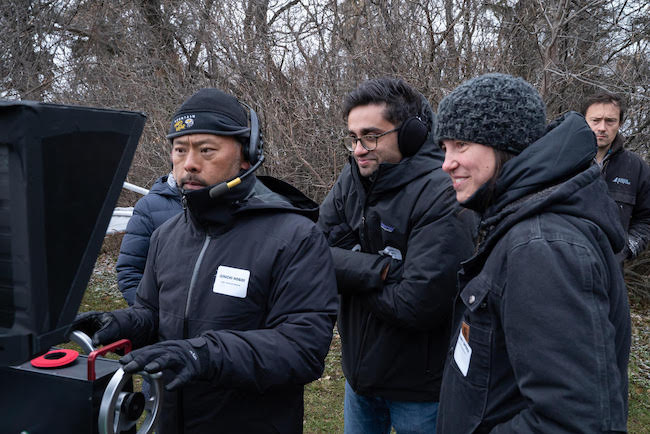
A-camera operator Junichi Hosoi, Chaganty and Spera.
Perhaps the filmmakers’ chief inspiration was the work of Alfred Hitchcock. While nods to the director are seeded throughout Run, one particular shot — with Chloe in the foreground, shaken by information she’s just received, as Diane runs toward her from the background — directly emulates the famed dolly-zoom technique that Hitchcock and cinematographer Robert Burks, ASC employed in Vertigo. “Aneesh and I were both looking for an opportunity to make that reference — an homage, really,” Spera says. To execute the shot, she used Panavision’s 70-200mm T3.5 Anamorphic Telephoto Zoom (ATZ), and she estimates the camera move to have been about 20 feet. “It was tricky because there was not a lot of space or time for that dolly move. Once again Doug Lavender helped make it all possible.”
Much of the movie is set inside of Chloe and Diane’s secluded rural home. As Spera explains, a “little farmhouse outside of Winnipeg” was used for exteriors as well as ground-floor interiors. “It felt small inside, but it had this great texture to it. It’s spooky. As soon as we saw the house, we all fell in love with it.”
Scenes taking place upstairs, including those in Chloe’s bedroom, were shot onstage. “The whole set was built to Kiera’s specifications so she could maneuver easily within it. Production designer Jean-Andre Carriere also did an amazing job of building it with the dolly in mind, so both the camera and Kiera could get around the whole set.”
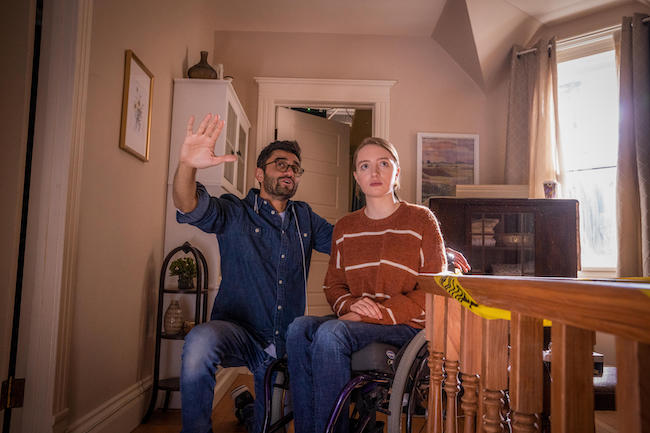
In a particularly harrowing sequence, Chloe pulls herself out of her bedroom window, across the roof, and back inside the house, into Diane’s room, through another window. “We called it our Mission: Impossible scene because we wanted it to have that energy and large scope,” Spera says. “In both cases, it’s a crazy physical challenge.” The actual roof was on a slant, so for certain shots, she adds, “we built a half roof set onstage that wasn’t tilted, so Kiera could act on it without having to hold herself up.” To simulate the roof’s downward slope, the filmmakers simply canted the camera.
Cast and crew tackled the actual location portion of the rooftop scene on the first day of principal photography. “We jumped right into the fire,” Spera reflects. “We started Day 1 with one of our most challenging sequences, with a Technocrane on a practical roof in Winnipeg, in the winter, and just went from there.”
The following summer, Spera returned to Canada for preproduction on The Craft: Legacy. “Zoe and I had started talking about it in spring of 2019, and we started shot-listing it in the early summer,” the cinematographer recalls. “I went up to Toronto in August, we shot until Thanksgiving, and then we did a week in L.A. as well.”
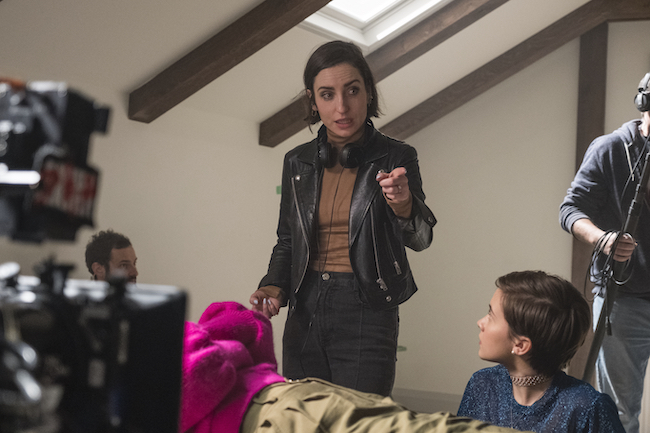
Director Zoe Lister-Jones.
Spera and Lister-Jones had previously partnered for the feature Band-Aid, which they shot in 12 days in 2016. The cinematographer describes that project as “an amazing experience. Zoe had the goal to hire all women in every department, and that’s what we did. From preproduction through post, it was an all-female team. I am so proud of that film. It was truly an incredible experience and was made with a whole lot of love.
“When Zoe called me about Craft, I pretty much fell out of my chair,” Spera continues. “I was such a fan of the original movie, and it was so exciting that Zoe was directing the reboot. Her take on it was so interesting and unique. She had a distinctive and really inspired vision for it, and such prepared and specific ideas for how she wanted to achieve it.”
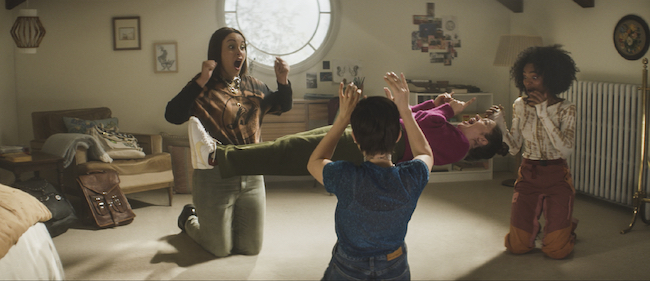
The original Craft was punctuated by certain stylistic hallmarks — including circular tracking shots around the four young women, and overhead angles captured with a rotating camera — that Legacy’s filmmakers knew they wanted to emulate. “That was important for us,” Spera says. “And for Zoe, there was always a motivation and an intention behind it.”
As an example, she references a scene in Legacy in which the four witches form a circle in the woods to perform a ceremony. With the camera on a Libra remote head at the end of a Technocrane, the filmmakers captured the circle from above, rotating the camera during the shot. The characters, Spera explains, “were invoking the power of nature, so the camera got high up above them to suggest this omnipotent force.” She adds that the high angle also served to position the characters as part of the environment, “as opposed to a lot of the rest of the movie where the camera is intimate with them on their level.”
The filmmakers were careful to accurately portray the story’s witchcraft. “It was very important to us to get that correct,” Spera notes. “We had three witch consultants on the movie, and one of them was on set in Toronto with us. She would keep us honest and say, ‘This is authentic, and this is the way to do this’ — so much so that the girls actually sat in the directions of their elements. We had to get those details right.”
Aside from those camera moves specifically designed to evoke the 1996 movie, Spera notes that Legacy “wasn’t meant to look exactly like the original film. We set out to make a film that was darker and more thriller-like. Rosemary’s Baby came up as a reference again, and we talked about Possession [1981]. In general, we wanted it to feel a little heavier, but then also have these moments of fun and lightness and the celebration of youth and discovery.”
Where the original Craft had been framed for 1.85:1, Lister-Jones and Spera opted instead for anamorphic widescreen, working primarily with Panavision G Series optics, which they complemented with select T Series primes. Regarding the G Series, the cinematographer says, “We wanted to use glass that was a little more vintage and a little softer as opposed to something really modern and sharp. Also the G series were smaller and more manageable, which helped as we were in a lot of practical locations.
“I always saw it as anamorphic,” she continues. “Lily’s often alone in the frame, and widescreen isolated her well, but it also allowed us to do a four-shot of the girls. It felt like anamorphic was the right direction to go to be able to show the strength of their relationship within the frame.”
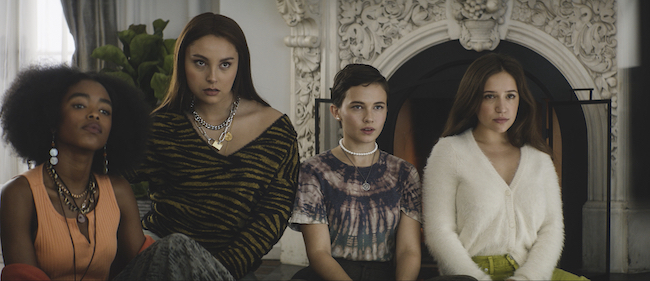
Ultimately, The Craft: Legacy paints a portrait of the enduring power that its four central women find through their friendship. “The magic is almost a supplement,” Spera says. “It’s really about female friendship and how important it is for women to support each other. That was such a driving message to all of us on the movie, and it was ingrained from the get-go. Zoe’s script was phenomenal in that way.
“We had a bit of our own coven in our team,” the cinematographer adds, “including production designer Hillary Gurtler, costume designer Avery Plewes, and producers Natalia Anderson and Bea Sequeira. Zoe, Hillary, Natalia and I had all collaborated before on Band Aid, and I am so grateful we were able to stick together and come to Toronto to do this, too.”
With both The Craft: Legacy and Run, it’s those creative relationships that Spera seems most grateful to have experienced, particularly with directors Chaganty and Lister-Jones. Both, she says, are “wonderful collaborators. There’s no wrong answer; every idea is welcome. That’s really inspiring. I feel very lucky to have had the rare opportunity to work with collaborators who inspire me to do my best work on two projects back-to-back. Working with each of them is such a dream.”
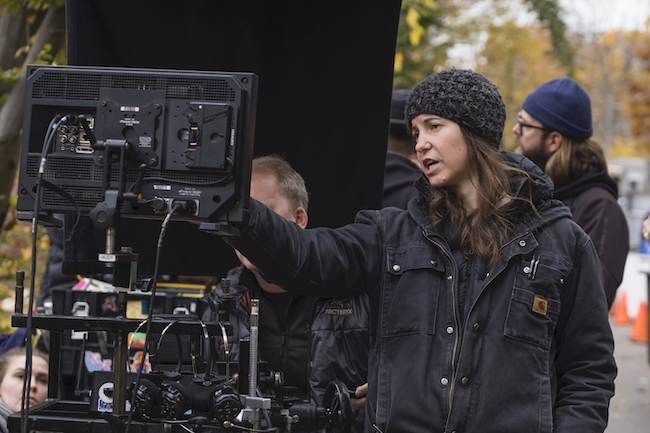
Spera on location for The Craft: Legacy.
The Craft: Legacy photos by Rafy Photography, courtesy of Sony Pictures. Run photos by Allen Fraser and Eric Zachanowich, courtesy of Hulu.